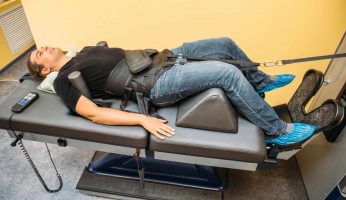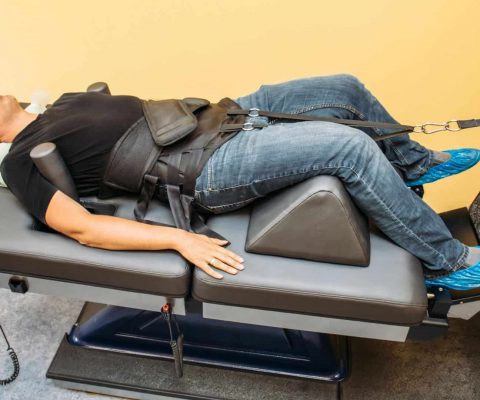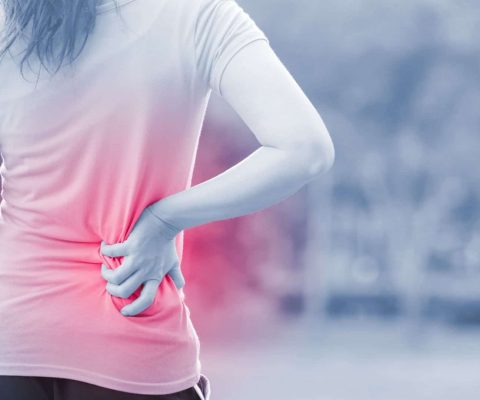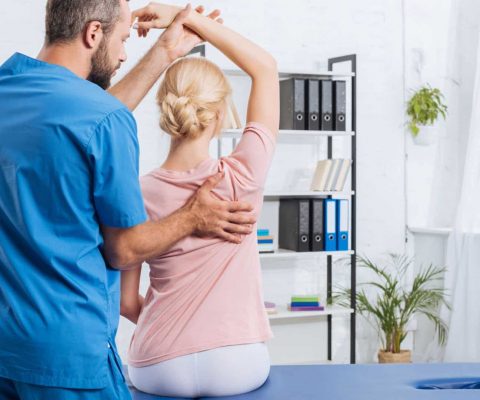The Complete Guide to Back Pain: Causes, Myths & Treatment
Disclosure: We use affiliate links and may receive a small commission on purchases.
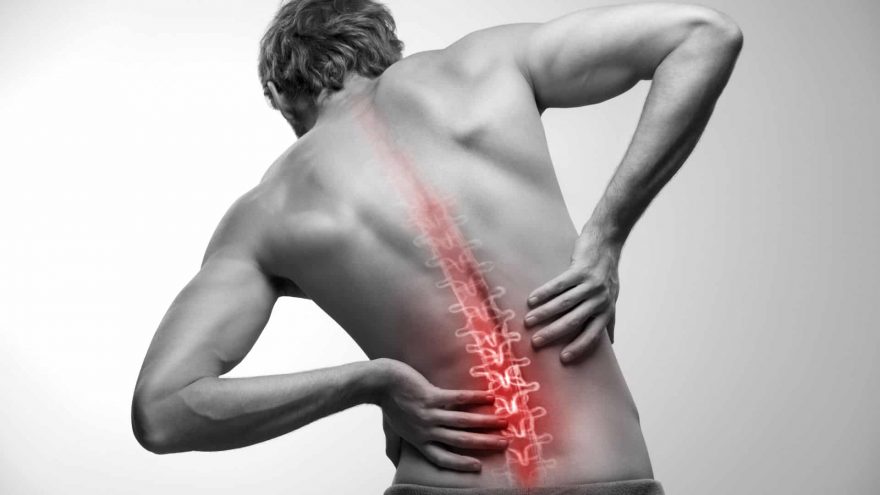 The Complete Guide to Back Pain: Causes, Myths & Treatment
thefitbay.com
The Complete Guide to Back Pain: Causes, Myths & Treatment
thefitbay.com
WARNING: If you are looking for an effective tool for back pain relief, be sure to check out our special article about inversion tables and find the best inversion table for your needs!
Are you currently suffering from back pain that limits you from living your life the way you want? Do you struggle to understand why you are in pain and to find treatments that provide you with lasting relief? If so, you are not alone. Worldwide, back pain is the sole leading cause of disability, with most people experiencing it at least once in their lifetime.
The importance of managing back pain cannot be overstated – if left unaddressed, this debilitating experience may spiral out of control. To make matters worse, a huge chunk of information discussing back pain is incorrect and leads people to believe things about their experiences that are simply not true.
These false beliefs can result in confusion, loss of hope, fear avoidance behavior, and depression. When these are combined with piercing pain, it is no wonder that many people have a very difficult time finding much, if any, relief.
This article will discuss in detail what back pain is, what causes back pain, and what you can do to find relief if you suffer from this condition.
Acute and Chronic: An Overview of Back Pain
It’s about as self-explanatory as it gets – back pain is, before all, pain in the back. This unpleasant sensory and emotional experience associated with actual or potential body tissue damage can vary in degree of intensity. And while back pain can cover a large area of the body depending on how the person describes their experience, the most common area of pain is usually reported in the lower back.
Depending on how long the pain persists, we classify back pain as:
- Acute back pain, which occurs as a result of body tissue damage from an event like a fall, car accident, or sports injury. The acute phase is associated with the initial phase of the injury and includes symptoms such as tissue damage, inflammation, pain, and tissue repair. Acute back pain can last from a couple of minutes to 6-12 weeks depending on the individual. If treated correctly, acute back pain usually subsides completely.
- Chronic back pain, which lasts longer than 6-12 weeks. In some cases, back pain can last for months, years, or even decades. The chronic phase may be associated with tissue damage, but in many cases, there are no structural causes of chronic pain. This can make chronic back pain much more difficult to diagnose and treat, causing frustration and sense of hopelessness for those suffering from it.
That is not to say, however, that chronic back pain cannot be overcome. With some self-reflection, a lot of persistence and the right treatment strategy, chronic back pain can be managed, improved or even remedied.
A Growing, Worldwide Epidemic
Whether it’s dull, constant ache or a sharp, unexpected sensation, back pain can emerge as a result of various causes. It could be triggered abruptly by an accident or worsen over time due to the vulnerable nature of our spine, which increases as we age. The causes are numerous and so are the people affected by this condition.
In fact, researchers estimate about 12% of people globally experience back pain at a single point in time. These numbers jump to 23%, 38%, and 40% for one month, one year, and lifetime timespans, respectively. (1) When you’re struggling with back pain, it may seem you’re fighting this battle on your own, but this notion couldn’t be further from the truth.
Other studies looking at the prevalence of back pain found that 19.6% of people between ages 20 to 59 reported chronic back pain, and 24% of those between ages 69 to 81 reported back pain in the last 12 months that interfered with their daily activities. (2, 3)
These numbers reflect a year-on-year epidemic. As back pain continues to rise and spread globally, so do the medical costs, decreased workplace productivity and inability of individuals to lead their lives at full capacity.
Living with Back Pain: What are the Symptoms?
Our backs are delicately structured. As we move around, a range of muscles, ligaments, tendons, disks and bones work together in harmony to support the body and help us move around. When incorrectly aligned or damaged, these structures result in back pain, symptoms of which can vary greatly depending on the severity of injury they sustain.
Here are some of the most common back pain symptoms:
- Pain in the lower back that may be central, one-sided or across the entire back
- Pain radiating into one or both legs
- Decreased range of motion and flexibility in the lower back and legs
- Difficulty with sitting or standing
- Difficulty walking and performing activities such as bending and lifting
- Inability to perform work or recreational activities
- Trouble sleeping, restlessness at night
- Weakness, numbness and tingling into areas of either leg
- Decreased reflexes in the lower extremities
- Possible bowel or bladder dysfunction
- Fear avoidance behaviors
- Mental health problems such as anxiety and depression
Most Common Causes of Back Pain
Back pain may or may not be associated with tissue damage depending on the type of injury that occurs, as well as how long it has been since the initial injury. Below are some of the most common causes leading to back pain:
- Traumatic events – events such as a fall, car accident, or sports injury that cause some sort of impact through the lumbar spine.
- Poor body mechanics – occur when someone is not moving with the correct movement patterns during activities like walking, bending, lifting, squatting, or twisting. Moving with poor mechanics can cause injury by putting increased stress on the structures in and around the spine.
- Prolonged posture – maintained the same position for a long time, particularly if the structures in the spine are not aligned in their neutral positions, can cause stiffness, tightness, and pain. This may happen at work, after sleeping or during long car rides – for example, when you’re on a trip.
- Overburden – Excessive stressful activity, particularly in deconditioned individuals or those with poor technique, can lead to injury of the lumbar spine.
- Mental or emotional disorders – Perhaps surprisingly, mental conditions such as depression and stress can manifest themselves into physical pain. This experience will be covered in more detail later in this article.
All of the mechanical causes listed above can potentially cause structural damage to the tissues in and around the lumbar spine. Below are some of the most frequent structural problems, what symptoms they may present and their typical impacts.
- 1. Bulging or ruptured intervertebral discs
Between each one of our spinal vertebrae is a disc that is made up of a tough, fibrous outer layer that surrounds a gel-like nucleus on the inside. Discs provide shock absorption from gravity and impact, as well as a smoother surface for each vertebral body to move on the other ones above and below it. Think of them as cushions between each bone of your spine.Traumatic injuries, poor lifting mechanics, and faulty movement patterns can cause the pressure on the outer fibers to be so great that the gel-like fluid on the inside may actually protrude out of the back part of the disc. This is often called a “bulging disc” or a “herniated disc” depending on the severity. This can cause pressure on important structures such as local nerve roots, spinal joints, and other structures. The pressure on these structures may also happen indirectly through local inflammation.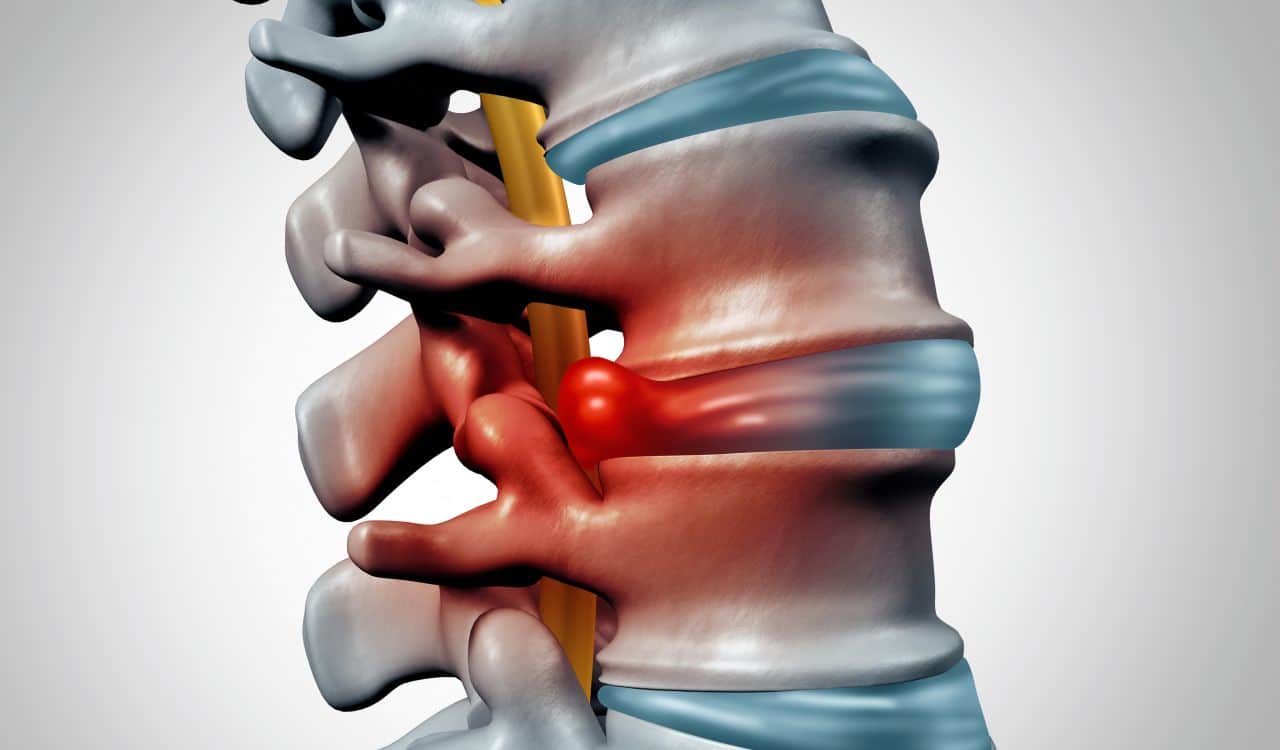
Discs may also undergo age-related degenerative changes. Although some of these are normal, excessive disc degeneration may cause decreased space between the spinal vertebrae, subsequently decreasing space and increasing pressure on nerve roots and spinal joints.
People with bulging discs or herniated discs often have difficulty with prolonged sitting, bending forward, and lifting objects. They may also notice radiating pain, numbness and tingling into one lower extremity in a specific pattern depending on the disc that is injured. Often, they find standing, walking, and laying down in certain positions eases their pain.
Those with degenerative discs typically find prolonged standing and walking more painful due to the pressure gravity brought upon their spine. They may feel relief when sitting or lying down.
- 2. Facet joints
Each vertebra has four facet joints, with two being on top and two on the bottom. Facet joints interact with each other and play a vital role in the smooth motion of the spine.Once these joints become irritated or restricted from trauma, poor movement patterns, prolonged positioning the person may experience limited movement and localized pain that radiates into one of the lower extremities depending on the affected side.Facet joints, just like any other joint, may also undergo age-related degenerative changes such as osteoarthritis. This causes increased pressure and rubbing of the joints due to the loss of articular cartilage lining each facet.
Traumatic causes of facet joint pain may present as localized one-sided back pain with possible radiating symptoms into the leg, but typically not past the knee. These people may have difficulty with certain movements which will depend on how the facet joint mechanics are altered. They also may have trouble maintaining certain postures like sitting or standing. Additionally, they also may complain of restricted motion or a “catch” in their back depending on the way the facet has been affected.
Arthritic or degenerative facet joint changes will likely result in more pain when standing, walking, or lying on the stomach. This is due to the compressive nature of these positions on the facet joints. These people often get relief from sitting, lying down, or stretching into spinal flexion.
- 3. Neural tension
All of the body’s nerves originate from the spinal cord and course through their respective tracts to innervate muscles, skin, organs, and other tissues. The nerves in the lower extremities all come from nerve roots that exit at the lumbar spine.In order for nerves to function properly, they require space, movement, and blood flow. When any of these are compromised, it is likely that the nerve will become irritable and cause pain.Neural tension refers to a mobility restriction of a nerve anywhere along its pathway. It can be restricted at the spinal level due to decreased intervertebral space, by tightened muscles compressing the nerve, or by adhesions in the connective tissue around the nerve along its pathway.
People with neural tension may feel sharp, shooting pains that occur in one or both of the lower extremities. They also may feel a sensation of tightness in the legs that doesn’t go away no matter how often they stretch. Additionally, bending over or sitting with the legs straight out may be particularly aggravating in those with neural tension.
Most people with neural tension will require specific exercises and movement to help restore neural mobility and reduce the sensitivity of the affected nerve.
- 4. Muscle spasms or guarding
It is very common to experience muscle hypertonicity, sometimes referred to as spasms. When the nervous system senses tissue injury or even a potential injury, it sends signals to the surrounding muscles to tighten and protect the area from further injury.This protective response may last for only a few seconds, but it could also last for days or even weeks. This response may also repeatedly occur if the nervous system continues to perceive a threat with a certain movement. This may cause local inflammation, decreased movement, tenderness along the affected muscle bellies, and pressure on surrounding structures.When people are experiencing muscle spasms, they may feel like the only thing that they can do is be completely still. However, the long term benefit of gradually returning to normal motion cannot be overstated.
Chronic Back Pain: A Deeper Look
As mentioned earlier, chronic back pain is a debilitating problem for many, and people often remain clueless as to the root cause of their pain. Understandably, this can be frustrating, scary, and demoralizing for someone who has not been properly educated on how pain works.
In most cases, pain is a good thing. It protects us from repeatedly sustaining bodily harm. Think of someone touching a hot plate and instinctively pulling their hand away. This built-in reflex has protected humans and ensured their survival for as long as we’ve existed.
Think of pain as an alarm system. When there is a threat to the body, the alarm system turns on, and the person acts accordingly to reduce the threat. When the threat has been eliminated, the alarm system shuts off.
However, in the case of chronic pain, the alarm system may remain on even after the threat has been eliminated. Furthermore, the alarm might be overly sensitive to inputs that normally would not be perceived as threatening. This constant stimulation of the alarm system can cause normal activities to become painful, or may even cause pain without activity.
Additionally, many people have been driven to believe all pain occurs as a result of tissue injury and that pain is an input to the brain. However, modern pain science research has actually shown that pain is an output from the brain as a result of the cumulative effect of all perceived threats in someone’s life.
Pain is a perception. As just like other perceptions such as happiness or fear, our brains decide when to trigger it. Some of the external and internal signals that spark pain may include but are not limited to:
- Previous experiences with pain
- Expectations regarding pain
- Social and cultural factors
- Psychological states
- Sleep deprivation
- Gender
These non-physical factors may influence the brain to produce pain even though the output is not necessary.
Fortunately, most, if not all people living with chronic back pain are not lost causes. If the inputs causing symptoms can be identified and switched for more positive inputs promoting safety to the brain, the pain output can be decreased.
Debunking Common Myths Surrounding Back Pain
With so many misconceptions surrounding back pain, it is no wonder many people find it hard to fully recover and their condition worsens. Here are some common myths that need to be tackled.
- 1. If I’m in pain, I shouldn’t move
A study conducted in New Zealand in 2014 found that 59% of participants thought any pain with activity should be avoided in the future and that 35% of the participants thought that bed rest is the main treatment for back pain. (4) The study also showed that those who had more negative views about their back pain had a poorer prognosis in their recovery.
Fear avoidance behavior can have negative effects on recovery time, and pain, although unpleasant, does not always correlate to bodily harm. Exercise and activity help promote increases in blood flow, range of motion, and flexibility, which aid in recovery. The back is strong and resilient, and it should be treated that way. - 2. Lifting heavy things is bad for my back
This statement should be amended to “lifting heavy things incorrectly is bad for my back.” The spine is capable of sustaining incredibly high loads, and our muscles can provide the stability needed to lift very heavy objects. People get hurt lifting objects with poor technique due to poor motor control, lack of flexibility, or fatigue.
Learning how to lift and carry objects properly will only help to strengthen the back and provide more support for heavy activities in the future.
- 3. If my pain recedes, my problem goes with it
As explained above, pain is often a signal that something is wrong and is just a symptom of an underlying issue. When people experience back pain, they should work to identify why they experienced the pain in the first place and address the root cause of their symptoms. Otherwise, it is likely that they will experience pain again in the future, likely worse than before. - 4. I just have a ”bad back”
People are often told that their pain is due to some structural abnormality such as a bulging disc or arthritis. This allows them to become content with playing the victim role and think that they have no influence on how they feel because they are “broken.”The truth is, pain and imaging are actually fairly poorly correlated. This study by Brinjikji et al reviewed several articles that included over 3,000 participants who underwent imaging to assess disc properties. The study found that the prevalence of disc degeneration in 20 year olds was 37%, and increased to a staggering 96% in those above the age of 80.The catch? None of these participants reported any back pain. Structural abnormalities occur without the presence of pain, and conversely, pain can occur without structural abnormalities. It is important to consider this and be encouraged that individuals can take control of their symptoms more than they realize.
- 5. Someone else will “fix” my back for me
This approach is wrong because the individual relies more on passive treatments (things done to them) rather than active treatments (things they do for themselves). Passive treatments such as medication, massage, acupuncture, joint mobilizations and manipulations may be helpful in the short term as long as they facilitate other approaches and make the individual empowered to take a more active approach to their recovery.Active approaches such as exercise and lifestyle modification consistently provide the long term relief that passive treatments usually cannot. If someone wants to experience full recovery in the long term, the realization that they hold the key to their success when guided in the right direction is critical.
Common Treatments for Back Pain
There are several viable treatments for back pain, and these may include home remedies or seeing a healthcare provider. If you experience back pain, you should begin treating it immediately and take care not to ignore your symptoms. The longer you wait, the more difficult treating back pain will be.
Treating Back Pain Inside Your Four Walls
When dealing with back pain, starting from the comfort of your home is usually the best way forward. Several treatment options are at your hand when looking for temporary and prolonged relief from the pain, including:
Inversion Tables
Inversion tables have been shown to help ease back pain. (5, 6, 7) The practice involves the use of a table that tilts the user at an angle of their choosing to provide decompression to the spine. This decompression can allow for improved intervertebral space, improved disc height, decreased pressure on nerves and muscles, and decreased pain.
Furthermore, inversion is a safe and cost-effective way of treating back pain without ever leaving your home.
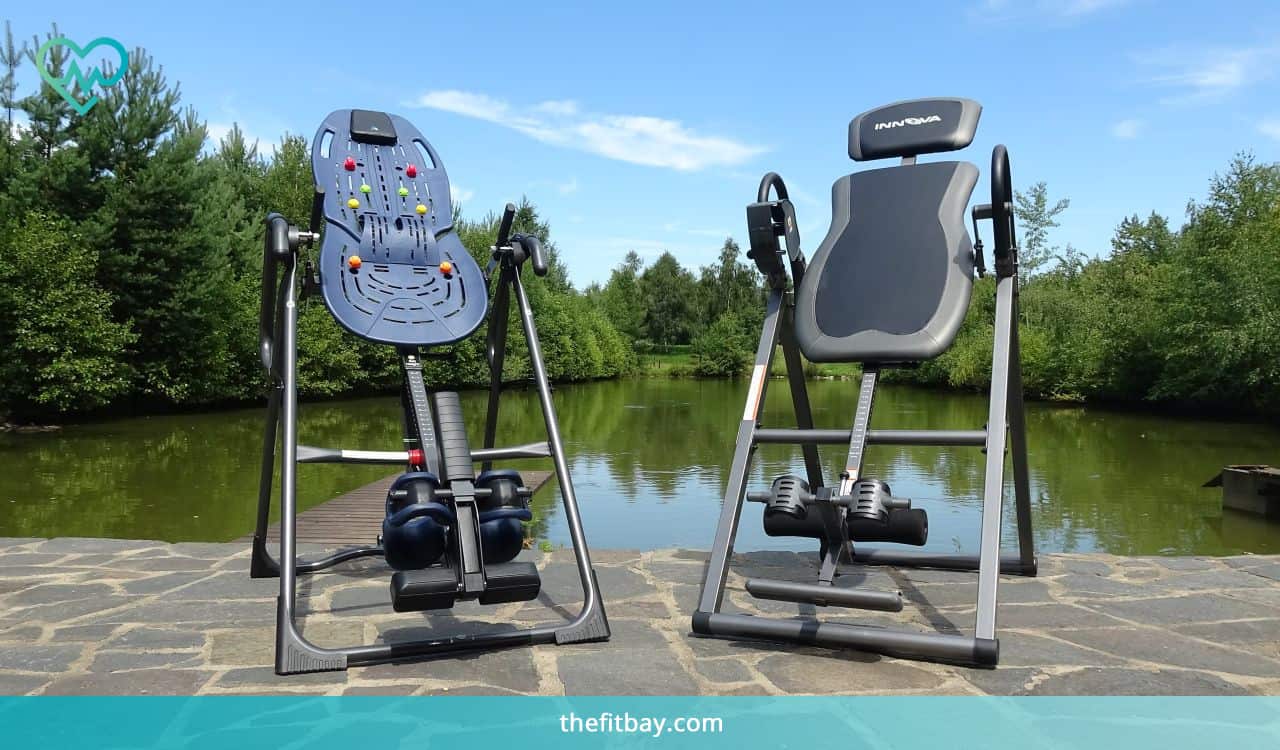
Traction Units
Research has also shown that traction is useful in treating back pain. (8, 9, 10) Similar to inversion, traction induces a decompression force that widens the intervertebral space, freeing the discs, nerves, joints, and muscles of the spine.
The main difference between traction and inversion is that traction uses a mechanical unit to provide the decompression, whereas inversion uses gravity to do so. Mechanical traction units may be more expensive than inversion tables, but they can be an effective option to manage back pain.
Heat and Cold
The main premise behind the use of heat and cold is to relax the body and inhibit the nervous system from producing as strong of a pain output.
Heat and cold can come in a variety of forms such as heating pads, ice packs, hot showers, ice baths, topical sprays or patches, and many more. Your preference is what is most important when choosing a temperature modality. The more relaxed you feel, the more benefit you will gain.
Essential Oils
Clinical studies have shown some essential oils can alleviate back pain. Ginger oil, for example, has anti-inflammatory properties while lavender oil can help with muscle pain and headaches.
You can either apply these topically or inhale them throughout the day; either way, make sure you don’t take them orally and avoid contact with your eyes – essential oils can be quite potent.
Self Massage
Although you may have difficulty identifying and reaching all of the problem areas that a massage therapist can, it may be beneficial to use tools at home to work these painful muscles out yourself.
There are many products out there like acupressure mats, massage sticks, vibration devices and similar tools to help you massage painful areas. Sometimes, it can be as easy as using a tennis ball or lacrosse ball. Simply find the muscular areas that feel tight or painful, press the ball on them, and roll against a wall or on the floor.
This may be quite painful, so make sure you don’t surpass your tolerance levels. A little discomfort is normal, but don’t use too much force to the point where it hurts. If you are tensing up against the ball, then you are likely not doing anything beneficial.
Exercises
Below is a list of general exercises that may be beneficial for back pain. It is important to note that this is not an exhaustive list, and that some exercises may not be as helpful for you depending on the nature of your injury. This is when it becomes important for you to seek advice from your local healthcare professional to properly assess and diagnose your specific condition.
That being said, these exercises aim to restore normal and pain-free motion of the lumbar spine. Pick the exercises that seem to work best for you. You should perform them to your tolerance level, and modify your range of motion as needed to reduce excessive symptoms.
- Lower Trunk Rotations
This will help with the rotation of your lumbar spine. Gently rock your knees from side to side as far as you are able to. Hold at the end position for 5-10 seconds and do 10-20 repetitions per side. - Open Books
This also encourages the rotation of your spine. Twist your trunk back as far as you can, holding about 5-10 seconds at the end position. Perform 10-20 repetitions per side. - Cat Camel
This exercise will help restore flexibility and extension to your spine. Round and arch your back alternatively, holding each position for 5-10 seconds. Do 10-20 repetitions for each position. - Bridges
This exercise facilitates the stability of your spine, as well as engagement of the gluteal muscles. Lift your hips off the ground as high as possible while still maintaining a flat lower back. Hold that position for 3-5 seconds. Repeat for 10-20 times. - QL Stretch
This is a stretch for a muscle commonly related to back pain – the quadratus lumborum. Use a wall, a pole or a doorframe, cross your legs as shown in the video, and lean your hips away from your hands. You should feel a stretch in one side of your lower back. Hold this for about 20-30 seconds and repeat 3 times per side. - Bird Dogs
This exercise will help strengthen and stabilize your lower back and core muscles. The goal is to keep your trunk as still as possible while moving your extremities as shown. If moving your arm and leg at the same time is too difficult, try moving just your arm or just your leg. Perform 8-12 repetitions per side. You can perform multiple sets if necessary.
If self-treatment doesn’t leave you with positive results, seek help from back pain specialists in your area. Let’s have a look at who does what.
Seeking Professional Help
Medical practitioners who specialize in back pain treatment and diagnosis are:
Physical Therapists/Physiotherapists
A physical therapist can conduct a comprehensive evaluation of you and your back pain. A good evaluation will typically consist of a thorough subjective history intake, a complete objective examination assessing your movement, imbalances, areas of weakness, and diagnostic testing.
Following this, the therapist will lay out a plan to help decrease your pain, improve your function, and get you back to living your life to the fullest as soon as possible.
Depending on where you live and what that area’s physical therapy practice guidelines are, they may be able to perform several treatments in clinic, including but not limited to: massage, joint mobilization or manipulation, dry needling, soft tissue mobilization, cupping, ultrasound, electrical stimulation, ice or heat, and traction.
While all of these treatments can be beneficial when used correctly, the physical therapist should always encourage an active recovery process. As such, expect that they will prescribe selective exercises based on your specific limitations so that you can return to your life with the tools to prevent future episodes of pain.
Chiropractors
Chiropractors, like physical therapists, conduct a thorough evaluation of you and your back pain. Their approach may be different but the end goal is always the same: to address any skeletal dysfunctions and imbalances to relieve pain and restore your full mobility.

Chiropractors typically employ a treatment approach relying heavily on joint manipulations and body realignment techniques to reduce pain and improve movement. They may also use other mechanical tools to help achieve this as well.
As with physical therapists, a chiropractor should be facilitating an active approach to recovery and empower you to take control of your symptoms.
Massage Therapists
A massage therapist can address areas of muscular restriction that may be causing pain or dysfunction. Massage can help improve blood flow, reduce muscle hypertonicity and guarding, and promote an overall feeling of relaxation.
Massage can be a useful tool in conjunction with active recovery tools and movement assessment to return you to your previous level of function.
Physicians, Physician Assistants, and Orthopedic Specialists
This group of healthcare practitioners can diagnose injuries through a combination of subjective examination, objective tests and measures, and imaging such as X-rays or MRIs. They can educate you about your pain and your possible treatment options. Depending on your location, a physician referral is required to see another healthcare professional.
These healthcare professionals may prescribe medications to help improve pain and encourage movement. If this is unsuccessful, they may recommend injections such as steroidal injections or epidurals to alleviate pain. If these treatments in addition to all other forms of treatment (chiropractic, physical therapy, etc.) have been unsuccessful, they may recommend surgery if you are a candidate. This option, however, should be your last resort and only conducted when all other options have been exhausted.
5 Back Pain Prevention Tips
Now that your back pain is gone, how do you prevent it from coming back? The answer may vary between individuals, but there are many general lifestyle modifications and habit changes you can make to decrease your risk for back pain.
1. Move Often
“Motion is lotion” is a common saying in the rehabilitation sector of healthcare, and for good reason. Movement helps with overall blood flow, joint lubrication, flexibility, strength, endurance, and overall health and wellness. Walking, cycling, yoga, strength training, and sports are a few examples of movement.

Any type of movement is sufficient as long as you enjoy it. Enjoying the activity will ensure that it is sustainable for you and you’re able to make it a long term habit.
2. Improve Your Posture
Much attention has been paid to posture recently. And while there is no such thing as the “perfect posture,” there are certain things we can focus on to reduce our risk of problems in certain positions.
Our bodies typically do not like to be in one position for long periods of time. This is why we roll around in our sleep, fidget at our desks or in the car, and shift back and forth with prolonged standing. Unfortunately, these situations are unavoidable at times, and that makes our positioning much more important.
This is particularly important when sitting. Many of us have desk jobs that require us to sit for hours. When sitting for long, gravity eventually brings us into a rounded posture which makes certain muscles in our back and neck get tight and others weakened. Proper ergonomic setup of your chair and desk will decrease gravity’s toll on your body. Here are some tips for proper desk ergonomics:
- Sit upright with shoulder blades back.
- Buttocks touching the back of the chair. Lumbar support may help with maintaining the natural curve in the lower back.
- Feet flat on the floor.
- Knees bent about 90 degrees.
- Elbows resting on armrest or desk so that shoulders are relaxed.
- Wrists slightly extended while typing. A wrist support pillow may help maintain this position.
- Computer monitor at eye level.
In addition to proper workspace setup, it is recommended that you get up and move around for 3-5 minutes every 30-60 minutes you spend in front of the screen. This will ensure some vital time off your back needs to avoid the risk of developing stress and imbalance leading to pain.
3. Assess Your Sleeping Positions
During sleep, we often spend long periods of time in a single position which affects our muscles, joints, nerves, and other tissues. Our bodies tend to prefer a “neutral” position. In relation to the spine, this means maintaining the normal curvature without excessive flexion, extension, rotation, or side bending.
Typically, most people have their preferred position to sleep. Some are back sleepers, others side sleepers, and the rest are stomach sleepers. Depending on your position of preference, you will need to assess how you can use your mattress and pillows to maintain a neutral position of your spine. If you’re waking up with pain or stiffness in the morning, make sure you reassess your sleeping positions.
4. Plan Ahead of Long Journeys
Long-distance trips are especially uncomfortable for your back. Sitting down restricts your blood flow and can provoke back pain, making what was supposed to be a relaxing trip an aching journey. To ensure your back is well rested and you enjoy a pain-free journey, follow the following tips:
- Travel light, take as little luggage as possible.
- Sit correctly and maintain a neutral posture.
- Support your lower back with lumbar pads or pillows.
- Move around and stretch often.
- Wear comfortable, breathy shoes.
- Avoid processed, unhealthy food; take nuts, fruit and water with you.
- Lift your luggage correctly and carefully.
5. Improve Your Lifting Mechanics
All of us have to pick things up and carry them around at some point in our day. Many people injure their lower back because of poor lifting technique.
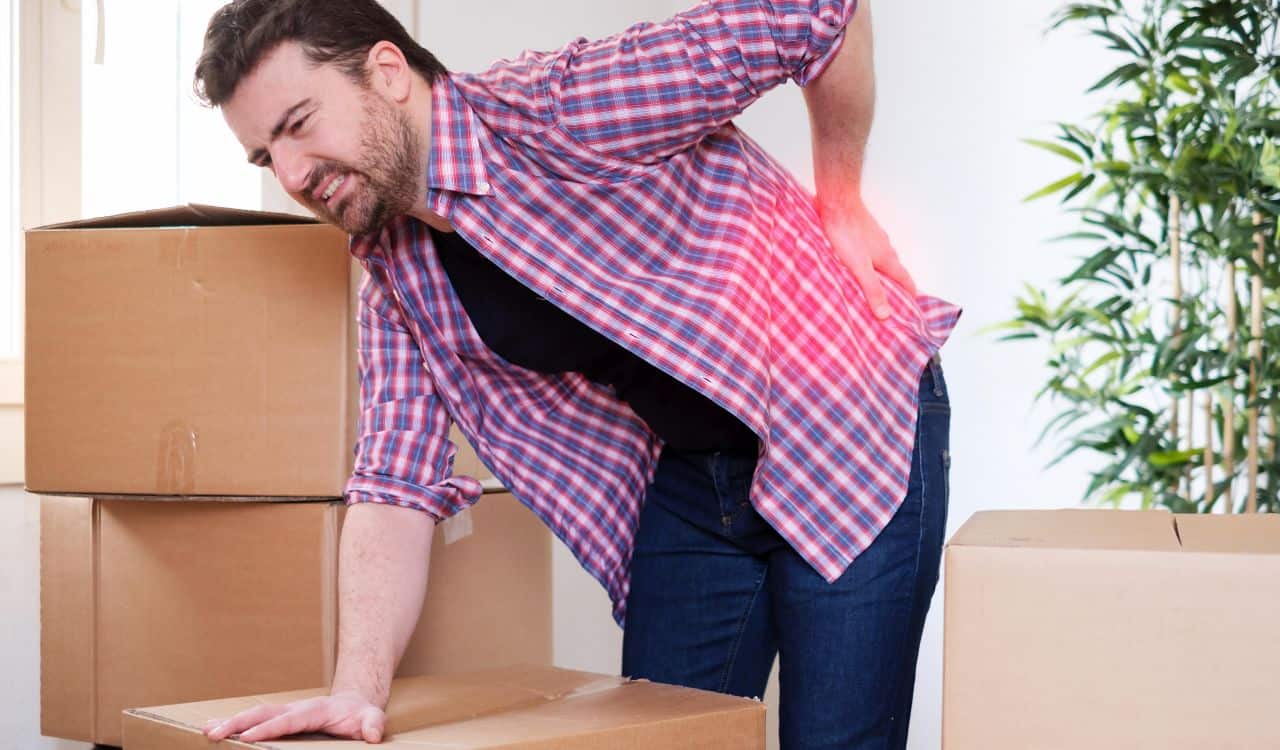
Especially with heavier objects, it is increasingly important to use good body mechanics to decrease the stress applied to the lower back.
Here are five correct lifting techniques you need to keep in mind:
- Keep your back straight, do not allow your lower back to round forward when picking up heavy objects.
- Bend from your hips and knees while maintaining a flat back. This ensures that the powerful muscles in your legs do most of the heavy work.
- Keep the object or weight close to your body. This decreases the demand of the muscles in your lower back.
- If you are putting the object somewhere on your left or right side, turn your whole body to face your target rather than just twisting your trunk.
- Keep your abdominal muscles tight to help provide stability to the spine.
Reuniting with Relief
Now that you’re better educated on the most common causes behind back pain, effective treatment methods and not-so-effective myths surrounding the condition, you will have a better chance of living your life free of pain and limitations the issue brings along.
Remember that back pain is an incredibly common musculoskeletal problem that most people experience at some point in their lives. Also, keep in mind that addressing the problem swiftly can prevent your condition from worsening down the road.
With so many potential causes of back pain, getting to the root cause of your ache can seem like a daunting task, but remember that numerous resources, tools, and professionals are there to guide you towards a more fulfilled, pain-free life.
Lastly, if there is one thing you’ll take away with you after reading this article, make it the fact that back pain can be managed, improved and prevented through treatment methods, correct attitude and lifestyle changes.


